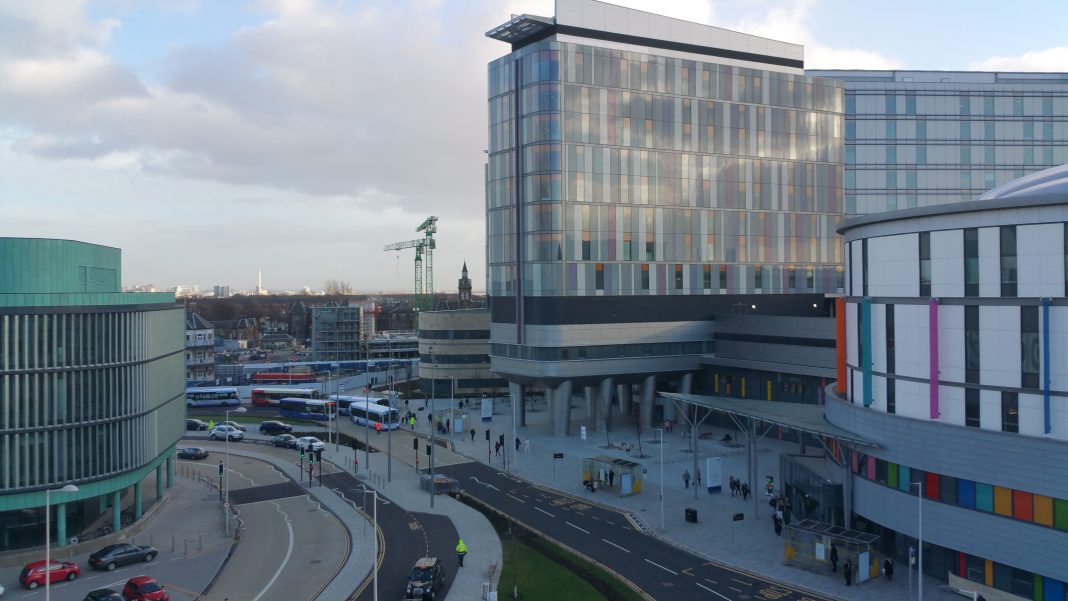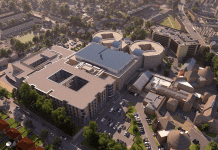NHS Greater Glasgow and Clyde has revealed it is taking legal action against Multiplex, Capita Property and Infrastructure and Currie and Brown UK for a number of design and installation issues within the Queen Elizabeth University Hospital and the Royal Hospital for Children
NHS Greater Glasgow and Clyde has served a summons on Multiplex, Capita Property and Infrastructure and Currie and Brown UK for losses and damages incurred due to a number of design and installation issues within the Queen Elizabeth University Hospital and the Royal Hospital for Children.
Due to the public interest in the hospitals, the summons has been published.
The summons outlines where the requirements of NHSGGC were not met in design, commissioning or building stages in eleven specific areas.
The legal action is being taken after a review commissioned by NHSGGC to consider how these technical issues (see below for full list) arose and any further actions required.
Specific issues have also been the subject of a further external review. An independent review by Health Protection Scotland (HPS) into the water supply confirmed contamination of the water system in 2018.
The independent review by HPS, which was commissioned by NHSGGC, was established to investigate a number of probable linked cases of infection associated with the water supply.
HPS agreed with the measures proposed by NHSGGC to address the water system issues – and these actions have been taken.
The report and the remedial work carried out by NHSGGC have been shared with families, the public and other stakeholders.
Patient safety is paramount
Jane Grant, chief executive of NHS Greater Glasgow and Clyde, said: “We would assure patients and their families that patient safety is paramount and that patient care at the two hospitals is of a high standard.
“Our staff strive at all times to provide high quality care and I would like to thank them for their continued professionalism and dedication during this time.
“Whilst we are now taking legal action on a number of design and installation issues, it is important to stress that the hospitals continue to provide safe and effective care.
“A significant amount of work has already taken place including the remedial action on the water supply and the ventilation.
“We know that patients, families and staff have been caused concern as the issues have emerged and I am sorry for any distress caused.
“As the matters are now the subject of court proceedings, we are not in a position to comment further.”
The 11 issues and breaches
Issue 1: Water system
After the handover of the Hospital by the first defender to the pursuer, systemic contamination of the domestic water system was identified. The pursuer has had to install an extensive chlorine dioxide dosing system to control the domestic water bacteria.
Issue 2: Standard isolation rooms ventilation
Defects which have been identified in relation to standard isolation rooms ventilation in the Hospital.
Issue 3: Adult Hospital Ward 4B ventilation
Defects which have been identified in relation to Adult Hospital Ward 4B ventilation in the Hospital.
Issue 4: RHC Ward 2A Ventilation
Defects which have been identified in relation to RHC Hospital Ward 2A ventilation in the Hospital.
Issue 5: Plant and building services capacity
Defects which have been identified in relation to plant and building services capacity in the Hospital.
Issues 6: Toughened glazing
Defects which have been identified in relation to toughened glazing in the Hospital (the ‘Toughened Glazing Defects’) include (without being limited to) instances of fractured glazing.
Issue 7: Doors
Defects which have been identified in relation to doors, there being in excess of 7,000 doors, in the Hospital (the “Door Defects”) include (without being limited to) the following: The use of MDF, rather than solid wood or metal, in door frames; hinges detaching from door frames; length of screws used to fix hinges to doorsets too short; extensive impact damage; failure of door closers; delamination of door veneers; and issues with seals.
Issue 8: Heating system
Defects which have been identified in relation to the Heating System include: The CHP system is operating inefficiently with significant rejection of heat and with projected energy savings not having been realised; the absorption chiller (an integral part of the CHP) is not operational; and a water temperature to facilitate proper operation of the CHP is not being achieved.
Issue 9: Atrium roof
Defects which have been identified in relation to the ETFE Roof include: 18 sections of the ETFE roof unintentionally burned off when tested. The hot wire system is accordingly not operational due to it unintentionally burning off ETFE roof sections during testing. A revised fire strategy has had to be implemented by the pursuer as a result. Moreover, there is no evidence of CE markings in the ETFE roof and hotwire system.
Issue 10: Internal fabric moisture ingress
Defects which have been identified in relation to internal fabric moisture in the Hospital include: Inappropriately high water absorption moisture readings in internal partition panels; sections of IPS laminate panels de-bonding; inappropriate detailing between walls and vinyl floor coverings; and insufficient floor drainage falls.
Issue 11: Pneumatic transport system (“PTS”)
The PTS is a network for transporting specimens within the Hospital. Defects which have been identified in relation to the PTS in the Hospital include: The PTS has been unable to cope with the requisite volume of specimens; and the PTS has suffered an excessive number of failures in operation, including at least 65 failures in the period from November 2018 to February 2019 alone.

















